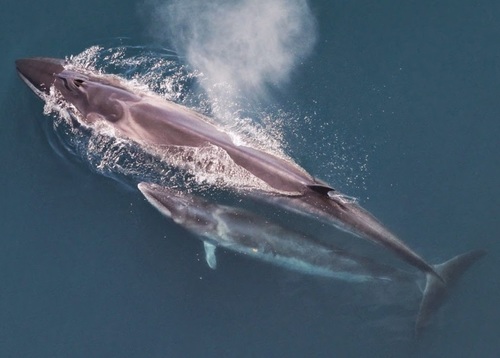
Sei Whale
The sei whale, Balaenoptera borealis, is a swift giant of the oceans, known for its streamlined grace and unique baleen filter-feeding. Preferring temperate waters, it plays a crucial role in marine ecosystems, maintaining the balance by consuming vast quantities of fish and plankton.
70 years
Lifespan
31000.0 kg
Weight
Length: 19.5072 m
Size
Grey, White
Color
32 mph
Top Speed
Endangered
Conservation Status
Increasing
Population Trend
Characteristics
Balaenoptera borealis, commonly known as the sei whale, inhabits deep ocean waters worldwide, favoring temperate and subtropical regions. It is known for its long, streamlined body, reaching up to 20 meters, and its unique feeding method, gulping large volumes of water and filtering prey through baleen plates. Sei whales are among the fastest of the great whales, capable of reaching speeds up to 50 km/h. They primarily feed on small fish, squid, and zooplankton.
Distribution Range of the Sei Whale
Balaenoptera borealis, commonly known as the Sei Whale, is found in all of the world's oceans and adjoining seas, except in tropical and polar regions. It is most commonly observed in the North Atlantic and North Pacific Oceans, as well as in the Southern Hemisphere between 20° and 60° latitude.
Sei Whale's Habitat
Environmental Conditions
Sei Whales inhabit deep off-shore waters and are typically found in areas with temperate and subtropical climates. They prefer oceanic waters with temperatures ranging from 8°C to 25°C. These whales often migrate between feeding grounds in higher latitudes during summer months and warmer waters during winter for breeding.
Ecological Niche
As a baleen whale, the Sei Whale primarily feeds on small schooling fish, crustaceans, and plankton, often found in large concentrations. They play a crucial role in the marine ecosystem as predators of these small organisms and as prey for larger marine predators. Their feeding behavior often involves skimming the water surface or engulfing large volumes of water, filtering their food through baleen plates.
Copyright @ Nature Style Limited. All Rights Reserved.
 English
English